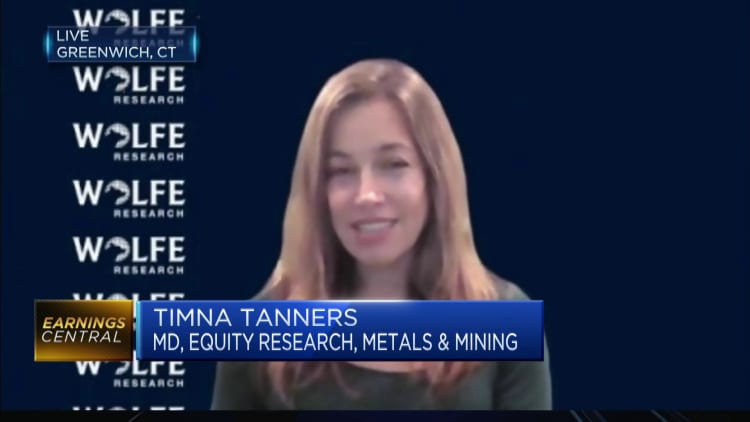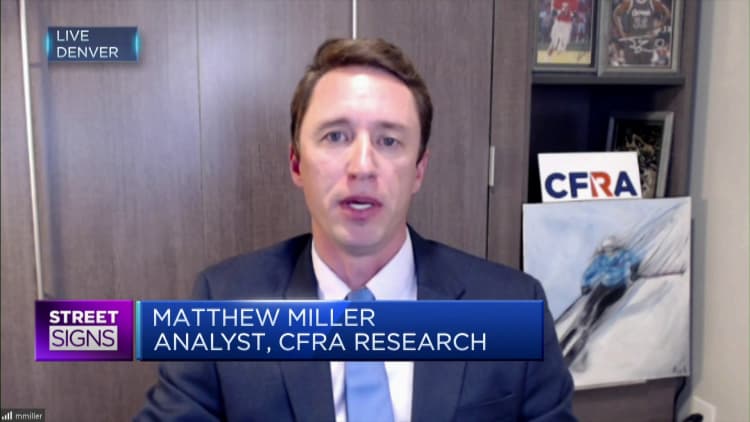Sanctions on Russia aluminum could send ripple effects through global supply chains

Aluminum is the latest casualty of global economic headwinds as prices sink amid alleged dumping of Russian aluminum, weakening global demand and soaring operational costs.
Earlier this week, stocks of aluminum in the London Metals Exchange (LME) warehouses leapt, sparking concerns of potential dumping of Russian-origin aluminum.
The White House is already considering a ban on aluminum imports from Russian producer Rusal.
Unsold metal tends to end up in the LME warehousing system, which are warehouses authorized by the exchange to store LME-registered metal.
“It’s been very disappointing for the poor aluminum market to see kind of a double whammy from weakening global demand, in China in particular, but also Russia dumping aluminum on the global market,” Wolfe Research mining and metal analyst Timna Tanners told CNBC’s “Squawk Box Asia” on Thursday.
“So definitely this quarter reflected those challenges.”
Dim outlook for aluminum
The next quarter doesn’t bode well either — unless there is some action to stop the potential dumping of Russia-origin metal and lift Chinese demand, both in infrastructure development and property construction, Tanners added.
So far, there is little sign Chinese demand could improve quickly given that President Xi Jinping has signaled at the Communist party meeting in Beijing that China will be sticking to its Covid-zero policies, she added.
This is exacerbated by softening demand elsewhere as interest rates rise, Tanners said.
Aluminum is the latest casualty of global economic headwinds as prices sink amid alleged dumping of Russian aluminum, weakening demand across the world including China and soaring operational costs.
Bloomberg | Bloomberg | Getty Images
Aluminum producers such as U.S. producer Alcoa and many in Europe are also facing higher operational costs, mostly due to surging power prices, Tanners said.
“Power is about 30% of total costs for an aluminum smelter so they’ve just been absolutely squeezed in some of the European operations,” Tanners said.
CFRA Research analyst Matthew Miller was also surprised at Alcoa’s recent third quarter loss, which the company had attributed to lower aluminum prices and higher costs of energy and key raw materials.
Like Tanners, he told CNBC’s “Street Signs Asia” that “things could get worse in quarter four before it gets better.”
Rising stockpiles a bad sign
While the LME does not publish where aluminum is sourced when inventories rise, a rise in global stockpiles is a bad sign given that base metal prices have already been hit by recessionary concerns, said Vivek Dhar, CBA mining and energy commodities analyst.
Any influx of Russian aluminum into LME warehouses also pose a more complex problem, Dhar said in a note.
“The LME price could trade at a discount to fundamentals if the exchange becomes a dumping ground for Russian metal,” he said, adding that Russia accounts for about 17% of the world’s aluminum production.
“The LME is acutely aware of the problem.”

And if the U.S. does go ahead with sanctions against Russian producer Rusal, it may have ramifications for global aluminum supply chains, ING economics commodities strategist Ewa Manthey said in a note on Wednesday.
Manthey said this was seen in 2018 when the U.S. Treasury last imposed sanctions on Russian billionaire Oleg Deripaska and the companies he owned, including Rusal.
Rusal is not only a major producer of primary aluminum, it is also embedded in global supply chains needed to make the metal, bauxite and alumina, she added.
“Rusal’s 2018 sanctions affected operations in Guinea and Jamaica, while smelters in Europe struggled to secure raw material supplies,” she said.
For all the latest World News Click Here
For the latest news and updates, follow us on Google News.

